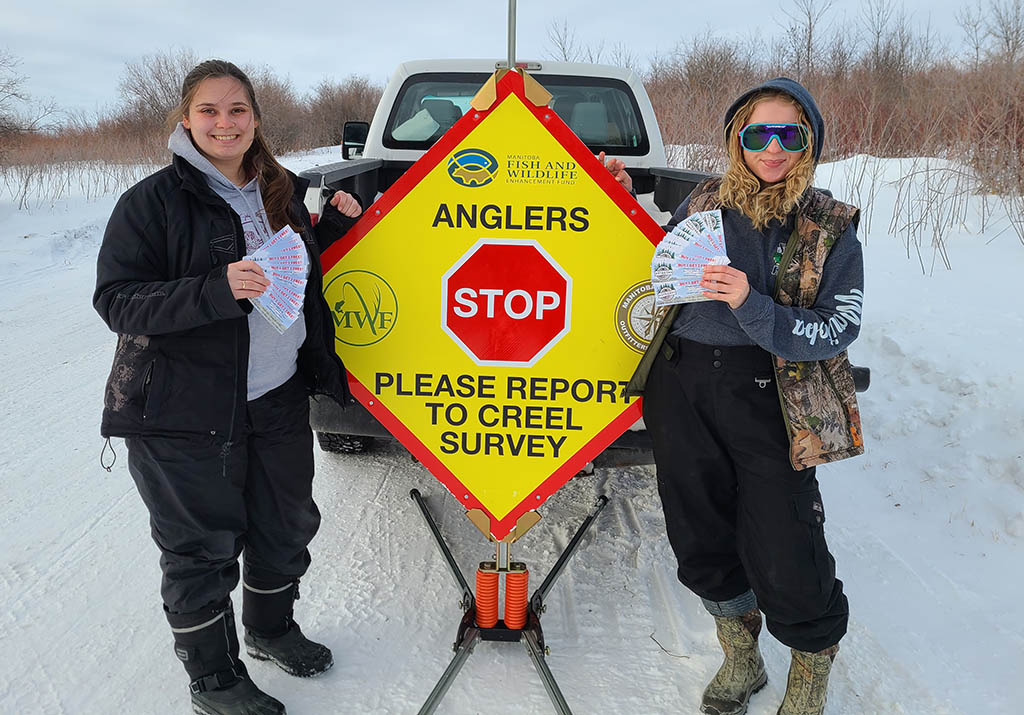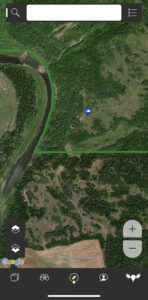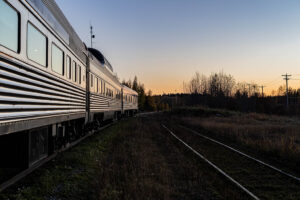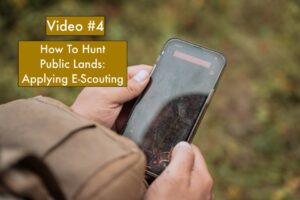by Chase Dreilich
During the 2021/22 ice fishing season the Manitoba Wildlife Federation along with the Manitoba Government conducted a creel survey on Lake Winnipeg. And the results are in!
Now I’m sure if you haven’t fished Lake Winnipeg yourself you have heard about the major draw to this waterbody, which is the Lake Winnipeg Greenback (Walleye). Over the past 15 years, recreational angling on Lake Winnipeg has greatly increased due to how close it’s located to Winnipeg plus, people can catch a fish of a lifetime.
If we rewind to 2018, Probe Research conducted a study on the economic impact that the Lake Winnipeg Recreational Angling Walleye Fishery. They discovered that recreational anglers contributed an estimated $102 million to Manitoba’s GDP over two years from Lake Winnipeg alone.
Beyond recreational angling, Lake Winnipeg also has a large commercial fishing community and is surrounded by many First Nation Communities that also value walleye tremendously.
This fishery provides enormous value for many people and we need to take care of it best we can. One way we can do this is through data collection. From a recreational anglers perspective, a creel survey is a great method that would increase the data on the current situation of Lake Winnipeg.
The project was funded largely by the Fish and Wildlife Enhancement Fund (FWEF) but there were also significant contributions made by the provincial government, Manitoba Lodges and Outfitters Association, and the Manitoba Wildlife Federation.
The official surveying began on January 6th, 2022, with 8 creel clerks that were stationed strategically in pairs at popular access points along Lake Winnipeg’s South Basin. Sandy Bar, Warner Rd, End of Main, Pruden’s Creek and Balsam Bay were the targeted locations. In addition to this, provincial fisheries staff also conducted roving surveys on snowmobiles, and interacted with anglers on the ice.
The survey was designed to cover all the days of the week but focused on the times of day when surveyors would get the most interaction with anglers.
Information that was gathered from anglers:
- # of anglers in a group
- Place of residence
- # of hours spent angling
- # of fish caught
- # of fish harvested
- # of master anglers
- And what bait was used.
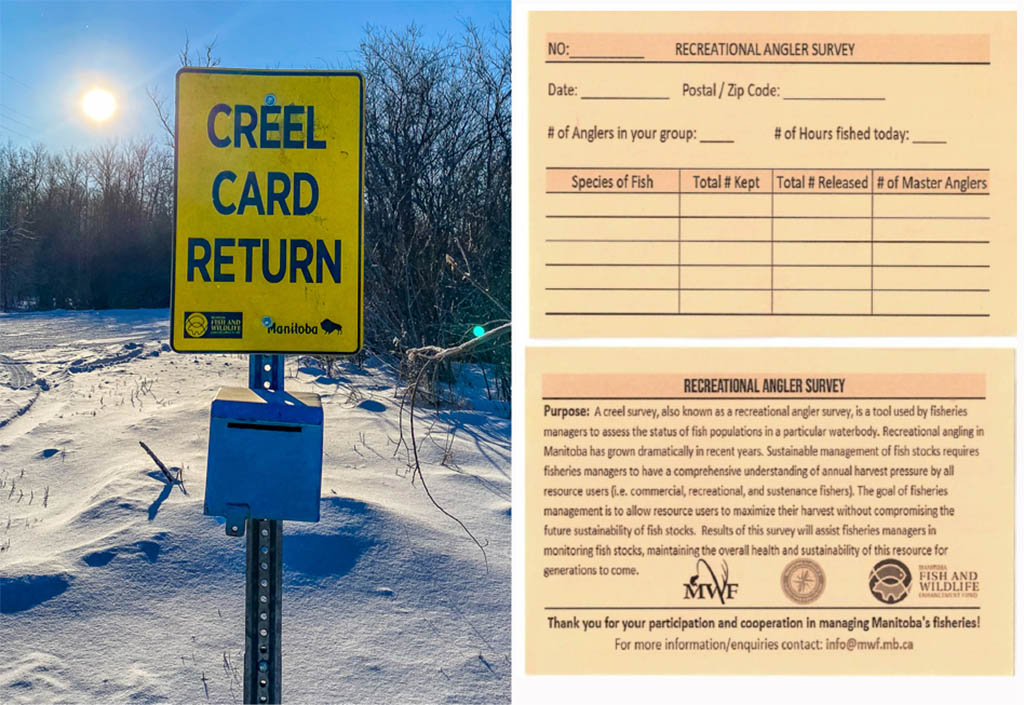
The primary method of information gathering was to survey anglers in person at the access points as they returned from a fishing outing. The second method of information gathering was done with a creel card that was given to anglers as they were headed out for their fishing outing. The creel card provided space for anglers to self-record all pertinent data. A drop box was provided at these locations for anglers to return their creel cards at the end of their outing. Car counters were also installed at the access locations for additional data collection.
From January 6th to April 3rd, 2022, creel clerks enumerated 10,195 anglers’ vehicles. 8,683 vehicles voluntarily participated in the survey which totalled 16,837 anglers. It is estimated that 25,238 anglers MINIMUM fished Lake Winnipeg’s South Basin during the survey period.
The catch data from this survey indicates that anglers surveyed fished for 170 094 hours with a minimum of 75 144 walleye caught and 29 255 harvested (39%). 81,878 fish were caught in total. 91.8% of them were walleye.
With this catch data, the Catch Per Unit Effort is determined by calculating how many fish per hour are being caught. You can see the differences in CUE across the survey location and the increase in CUE in March when the fish become more active.
Lake Winnipeg attracted anglers from all over the world in 2021/22. Of the anglers, Manitoba residents made up 86.3% while 13% were from the United States. 19 different states to be exact, Alaska and Texas included. Other international anglers resided as far away as Norway and Thailand.
Over the period of the creel survey, 926 master angler walleye were reported to creel clerks. 38% of which were caught by foreign residents.
Amongst the 16,837 anglers, 506 indicated they were utilizing a licensed outfitter. In comparison, the walleye catch per unit effort was .77 fish per hour with a guide service and .42 CUE for non-guided anglers. On average guided anglers caught 6.8 walleye per day whereas non-guided anglers caught 2.9. Harvest rates for guided anglers were 26.9% and 40% for non-guided anglers.
Despite a winter that was brutally cold with higher-than-normal snow accumulation, creel clerks were able to survey an incredible number of anglers compared to past creel surveys where only 2 creel clerks were surveying. With the increased data collection fisheries managers can make the best decisions on how this fishery is managed for long-term sustainability.
A thank you goes out to our amazing team of creel clerks who did a fantastic job and to the great folks in our provincial fisheries department who were incredible to work with.
Read the detailed creel survey report created by provincial fisheries staff.

